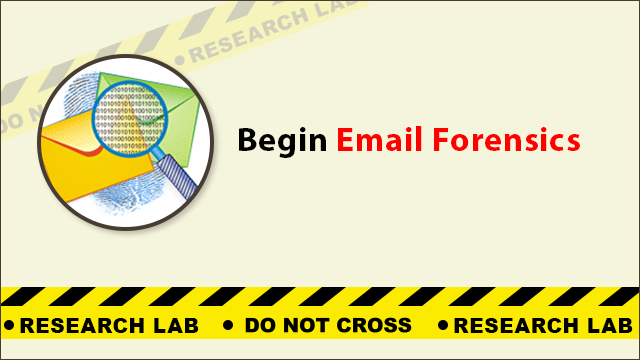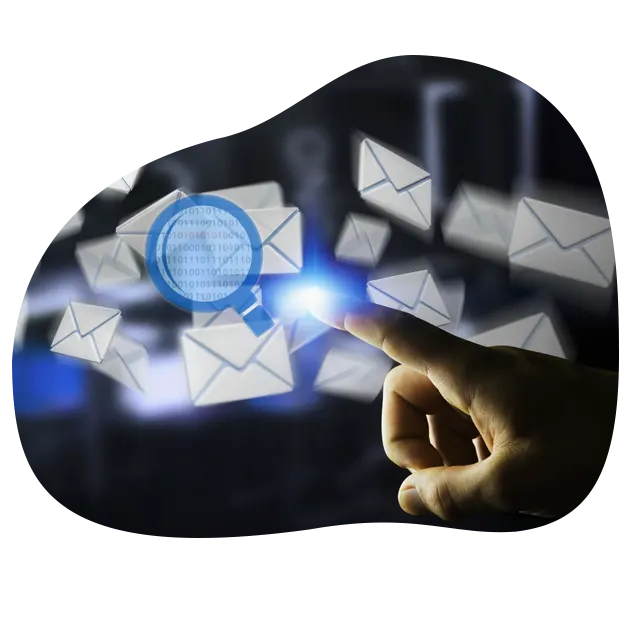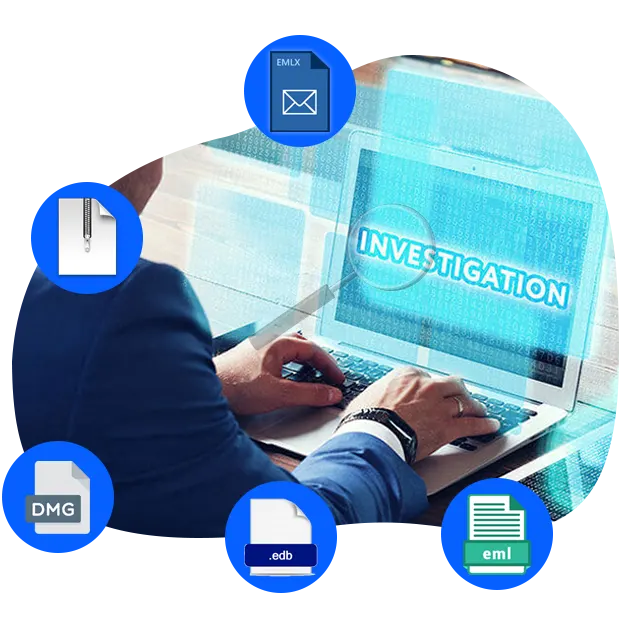How to Begin Email Forensics?

Introduction: Investigating suspicious emails can be complex but if you know how to begin email forensics, then it can be a piece of cake. Follow the article till the end to find a systematic approach to investigate and analyze the email in question. In addition to that you will get to know the best email forensics tool which smoothly handles different aspects of the investigation.
Email is the primary source of communication for business as well as public activities, be it banking, sending medical reports, sharing attachments, etc.
Though Email is a convenient medium for sending or receiving important files, it has become vulnerable to various kinds of cyberattacks. And, from email desktop clients to web-based email services, hackers don’t leave a spot to execute criminal activities.
Since the role of email has increased in the field of digital forensics, emails are considered crucial evidence, it’s important to understand the significance of Email forensics.
But, before discussing that let’s discuss the structured approach to begin email forensics.

Systematic Approach to Email Forensics
Here are the steps to be taken into account while performing an email investigation.
1. Define Scope: First determine the purpose and scope of your email investigation. Ask yourself some valid questions that are needed to resolve the case.
2. Secure the evidence: The most important part of email forensics is to preserve the evidence to ensure it is admissible in legal proceedings, if necessary. So, make a forensic copy of the original email and its related data.
3. Analyze email headers: To accumulate information about the sender, recipient(s), date and time stamps, email servers involved, and any intermediate hops, you need to examine the email headers. Without this, it’s nearly impossible to find out the valuable clues.
4. Examine email content: Next step is to consider the email’s body, subject, and any attachments while analyzing its content. Thoroughly look at emails to locate any questionable or malicious content, embedded scripts, or links to potentially dangerous websites.
5. Analyze metadata: Along with email it’s important to analyze the metadata such as the message ID, sender’s IP address, timestamps, and any other relevant information. Cause it can provide crucial details about potential tampering.
6. Retrieve deleted information: Use a professional email forensics tool to recover deleted or hidden information in the email. Because it may reside some valuable broken string of the investigation.
7. Report and present findings: Last but not least prepare a detailed report on your findings which includes any evidence discovered, analysis conducted, and conclusions reached. It’ll help you summarize your conclusion.
The above steps are necessary to begin email forensics.
Importance of Email Forensics in Cyber Investigation
First and foremost email forensics is essential for digital investigation. From legal proceedings and data recovery to protecting individuals and organizations, it plays a vital role. Furthermore, it helps in carving out critical evidence which aids in establishing facts and responds to email incidents effectively.
Here are some key reasons why email forensics is essential in cyber investigation.
- Helps in collecting, analyzing, and interpreting evidence from emails to support investigations related to cybercrimes.
- Allows organizations to understand the scope of the incident and take appropriate remedial actions.
- It ensures the authenticity, integrity, and admissibility of email evidence, providing crucial information and insights to support legal arguments.
Besides, through Email Forensics, forensics investigators can find the actual sender and receiver of an email, and the date & time it is received, which could help them in solving the case.
Before you begin email forensics, it’s crucial to know the associated challenges.
Challenges Faced by Forensics Investigators While Examining Emails
During the investigation process, investigators encounter various challenges. Such as end-to-end encryption, email header manipulation, deleted emails & metadata removal, and the most disturbing element is multilingual & non-textual content in the email.
To explain more, hackers these days utilize different techniques to create fake emails by manipulating and scripting headers. And, analyzing the same is a real challenge.
Secondly, through email spoofing cybercriminals cleverly present an email as someone else’s. In such a case identifying the original IP address becomes difficult.
Last but not least, emails can be stored in various proprietary email formats. And, this poses a challenge for forensic investigators while reading reams of mailbox data.
So, it’s crucial to have a robust email forensic tool like MailXaminer that can help tackle all the challenges involved in Email Forensics.
Download #1 Top Rated Email Forensics Tool
In fact, many Email forensics investigators take the help of this professional tool while undertaking email investigations.
Let’s dig deeper and carve out the small details to carry on the e-mail examination.

Put the Smart Tool in Charge to Begin Email Forensics
These days, from on-premise email clients to cloud-based email services, emails are being compromised.
And, Email Forensics is the only way out to catch the culprits involved in fraudulent activities. So, let’s understand various aspects of the professional tool to begin email forensics.
- Case Management: There might be a scenario where a forensics professional has to handle multiple cases at a time and it requires proper management. Favorably, this software facilitates case management to manage all the evidence perfectly.
- Email Analysis: Emails are stored in different file formats which makes them difficult to examine. But, with the right tool, it is possible to search for a particular keyword and analyze the email headers, attachments, documents, etc.
- Search Evidence Through Particular Set of Keywords: In an email investigation, it’s always feasible to view multiple entries at once. And, the email investigation tool lets users perform an accurate and improved search within emails & attachments by entering a particular keyword. Through this, one can easily filter search results depending on the scenarios.
- Forensic Video Analysis: Some emails contain suspicious videos, examining the same is also a vital part of email forensics. If you have the software to detect such uncertain video content. Then it could be an added benefit for the investigation.
There’s More
- Advanced Link and Time Analysis: When a forensics investigator can visualize, analyze, and examine the email conversation between two or more users, the chances of success rate is high for a particular case. So, having a tool that provides link analysis intelligence and provides the exact timestamp can help the investigation run smoothly.
- Examining or Calculating Hash Values: One of the crucial parts of email investigation is to identify the integrity of data. And, computer forensics professionals should have an appropriate tool. So that they can examine SHA1 to ensure that the evidence is not being tampered with.
- Geo-Location Mapping: If an email contains images then through geo-location mapping of the software, it’s possible to know the geographical location. And, later computer forensics investigators can export the result in KML format to present it as evidence.
- Detailed Report Generation: After an email forensics investigation, it’s essential to generate a report including cases, keywords, bookmarks, output formats, etc. These details are important as it is required to be presented in front of the court as electronic evidence.
Final Verdict
Currently, malicious cyberattacks, especially phishing attacks targeting emails are drastically increasing. A thorough Email investigation is the key to addressing such types of issues. And, if you know how to begin Email Forensics then you are halfway to finding the culprits and winning the case. So, start analyzing the emails with the help of the tool. And make the other half of the investigation journey smoother.
